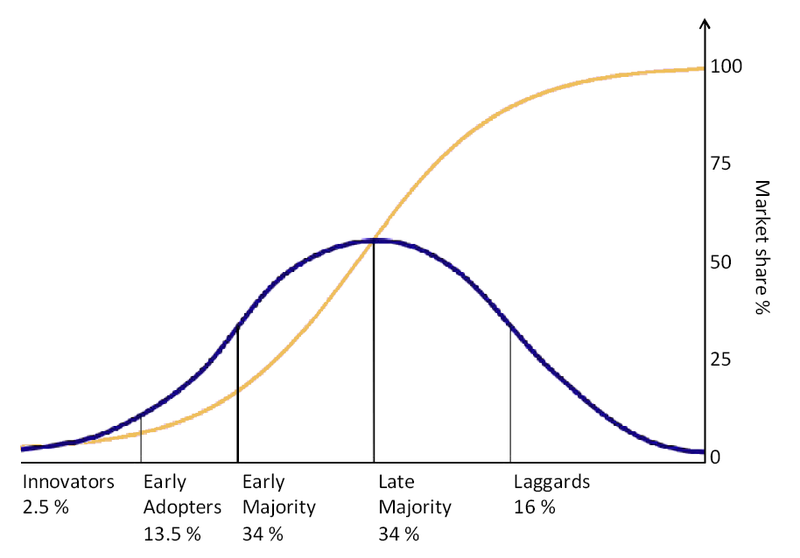This week I had my first non-school-related consulting project. The client had read my blog and asked if I could take a look at a project he was getting ready to launch. I was a bit nervous, as I'm just starting out, but I thought it went rather well.
The client has developed a software program called FaceGuard. The program is an innovative password management system that requires users to pick faces they know from an array of pictures instead of memorizing passwords. The company uses a differentiation strategy and is attempting to move from a focused target, i.e. medical doctors, to a broader client base. The software has been redesigned for download over the Internet under a “Freemium” business model, and is awaiting product launch.
The client has developed a software program called FaceGuard. The program is an innovative password management system that requires users to pick faces they know from an array of pictures instead of memorizing passwords. The company uses a differentiation strategy and is attempting to move from a focused target, i.e. medical doctors, to a broader client base. The software has been redesigned for download over the Internet under a “Freemium” business model, and is awaiting product launch.
Issue to be addressed
As with any start-up project, there are many issues to be addressed all at once, but the potential trouble spot that I dealt with was strategic fit with customer needs. When marketing a product to a group, it is important to divide customers into target segments who have similar needs and then try and meet the needs of one or two of the segments. It's often better to effectively serve a smaller group than to serve a larger group moderately well.
Right now, as I understand it, the company’s target customers are average computer users. This is a huge group of people. The potential issue is that a large portion of this segment see their computer is "a tool used to access the Internet and watch cat videos". This type of customer is not necessarily aware of the need for effective password management. They are content with the old system as long as they perceive it as working reasonably well.
For purposes of example, a similar issue would be faced by a company selling an upgrade for cars that would make them harder to steal. The upgrade might be very useful but most people wouldn't think to take the time to install it. Even if it were free, it would be hard to convince people to take the time to install it. In a sense, these people don't care about their car, they care about being transported conveniently, and will only care about the car if it stops transporting them conveniently.
For purposes of example, a similar issue would be faced by a company selling an upgrade for cars that would make them harder to steal. The upgrade might be very useful but most people wouldn't think to take the time to install it. Even if it were free, it would be hard to convince people to take the time to install it. In a sense, these people don't care about their car, they care about being transported conveniently, and will only care about the car if it stops transporting them conveniently.
Possible ways to address the issue
As the Internet matures, people find themselves with more and more website accounts and more and more passwords to memorize. Most passwords people use are not secure at all and can be guessed by a computer program very easily. It may be that people will see the need for such a system within a few years. This would be ideal for the company, especially if they position themselves to be the first mover in the market.
With new products, ideas and concepts, there is usually an adoption rate that follows a distribution similar to the Normal Distribution:
(Source: Wikipedia)
The innovators and early adopters try the product first because they want something different and edgy. The early and late majority join the movement for a different reason: others have tried it out and it is relatively safe.
Segmenting
At this point, FaceGuard needs to identify who are the most likely group to be early adopters, and try to make the product appeal to them as much as possible. It is through seeing the benefits to the early adopters that the early majority will feel confident enough to try the technology out for themselves.
Potential candidate segments for the early adopter market could be people with a need for enhanced security who are likely to be viewed as “in the know”. For example:
Potential candidate segments for the early adopter market could be people with a need for enhanced security who are likely to be viewed as “in the know”. For example:
- Professionals: lawyers, government workers, counsellors or accountants, for example. This group has specialized security needs and would likely be most open to purchasing the software
- Computer Enthusiasts: This group is likely to have security concerns, and also likely to engage in online discussions of new technology. Reaching this group is also likely to be cost-effective because marketing can be done through online forums.
Market research could help to identify the needs and desires of the chosen segment. This will allow the product offering to be tailored to the needs of the segment. Once FaceGuard becomes established among this segment, it is time to shift the marketing strategy to attract the early majority. Often this can be done through branding the product as “the one the professionals use” or “the security most used by computer specialists”.
Partnerships
One area not to be overlooked is partnerships with organizations that have resources and capabilities that are complimentary to FaceGuard’s. These partnerships can help obtain a wider distribution to the early adopter segment, and puts the burden of distribution on a company who already has distribution capabilities. Possibilities could be:
- Consumer electronics companies: Bundling the free version of FaceGuard with new computers or mobile phones.
- Software suite companies: Again, through partnerships FaceGuard could be bundled with other software utility suites
- Operating system/browser developers: FaceGuard technology could be licensed to development firms to be distributed as a function of a browser or OS in exchange for a royalty fee.
The Future
Insofar as the goal of the company is to see widespread adoption of FaceGuard software, one of the more likely scenarios by which this could happen would be acquisition by a larger firm. If this end is sought, it would be helpful to first seek out a venture capital investment. The involvement of private equity investors helps to make firms more attractive to potential buyers.
And that was my first foray into small business consulting.

















2 comments:
As the developer of FaceGuard, I greatly appreciate Nathan's objective insight. I feel he identified several critical points and new opportunities. I'm currently pursuing an avenue that combines his elements with those I've discovered. Nathan's consult was very timely.
Sometime later...
I realized my original strategy -which Nathan was not aware of due to local counsel- was the best. We've been quite successful since pivoting.
The insight a startup receives from anyone is based on what the advisor is familiar with rather than what may be applicable. The more experience, the more valuable.
I will add venture capital is dangerous. Be assured 99.9% of the time the founders will be forced out with little or no compensation. If there is any way possible, prove the value of your offering via sales revenue to such a degree you don't need the money. Only then can you listen to VC proposals. Above all, make sure you have an experienced attorney totally aware of every nuance of venture investment.
Post a Comment